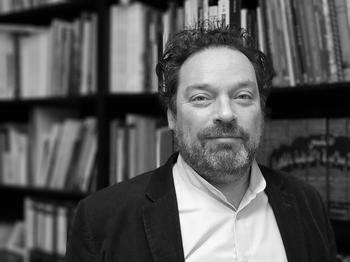Prof. Dr. Stefan Weber
Professor Dr Stefan Weber is the Director of the Museum of Islamic Art at the Pergamon in Berlin, Germany. Previously, he was Assistant Professor of Material Culture at Aga Khan University in London. Between 1996 and 2007 he was a Research Fellow at the German Archaeological Institute (DAI) in Damascus and at the Orient-Institute Beirut (OIB).
He currently organises the re-conceptualisation of the Museum of Islamic Art, which explores new grounds for communicating the legacy of art, architecture and archaeology of the Islamic Middle East. He is currently focused on the accessibility of the museum to the general public and has started several community programs. Multaka is one such program for which refugees serve as museum guides for newcomers. The program has won several awards. He has curated numerous large exhibitions and directed research including an award winning restoration and documentation projects on cities and the cultural heritage of the Middle East. His academic interests combine the fields of material culture and Islamic Art and history ranging from the Umayyad period to early modern cities in Syria and Lebanon. Dr Weber is a member of the international board of the Congress of Turkish Art, corresponding member of the German Archaeological Institute, member of the International Council on Monuments and Sites (ICOMOS) and other relevant organisations. He has published widely on Middle Eastern heritages and is an Honorary Professor at the Free University Berlin.
Course Title: Art and Material Culture of Muslim Societies
Course Description:
This course will provide an introduction into the material legacy and aesthetic practices of Muslim majority societies in North Africa, the Middle East, Central Asia and the Indian Subcontinent from late antiquity to the modern period. The backbone of the course will be an exploration of the artistic legacy following four major periods (Late Antiquity, the Middle, Early Modern and Modern Periods) and will familiarize students with the most important dynasties and centres of artistic cultural production. In addition, we will discuss topics and consider notions and processes of cultural production as well as their relevance today in museums and cultural life.
The History of Art and Architecture of Muslim Societies
- A critical introduction to the Field of Islamic Art and Archaeology: its history, state of the art, terminology, resources and methodologies.
- Late Antiquity – the Empires of the Caliphs: From Ancient Iran and the eastern Mediterranean towards Damascus, Baghdad and Samarra – 6th/7th to 10th/11th centuries
- The Middle Period – Sultans between the Mediterranean and China: From the Mediterranean, including Cairo, Palermo and Granada, together with Kashan, Konya and Nishapur – 10th to 15th century
- The Early Modern Period – Shah, Sultan and Great Moguls: Ottomans, Safavids and the Great Moguls from Istanbul via Isfahan to Delhi/Agra – 16th to 18th Century
- Onset of Modern Period – Europe and the Middle East: New forms in global modernity via Tehran, Istanbul and Lucknow – 18th to early 20th century
Themes of Art and Material Culture of Muslim Societies
- The wonders of creation: the role of religion, the human experience and notions of beauty.
- Unity or diversity: challenges of the field of Islamic Art, culture as a transregional experience.
- The making of fine distinctions: bourgeois urban culture, houses, interiors as the expressions of self, social hierarchies and their material manifestations.
- A world of objects: consumption, distinction, and habitus following Bourdieu, semiotics, anthropology of art etc.
- Staging Muslim Art: Islamic Art collections, selecting, provenance and presenting Muslim Cultures. Which notions of culture.
- Perspectives of art and material culture in times of migration and polarization.
Literature:
- Sheila S. Blair / Jonathan M. Bloom: The Art and Architecture of Islam 1250-1800. New Haven (1994)
- Richard Ettinghausen, Oleg Grabar and Marilyn Jenkins-Madina: Islamic Art and Architecture, 650-1250, Yale (2001)
- Finbarr Barry Flood and Gülru Necipoğlu: A Companion to Islamic Art and Architecture, 2 vols., Hoboken (2017)
- Robert Hillenbrand, Islamic Architecture: Form, Function and Meaning, new ed., New York (2004)
- B. Junod, G. Khalil, S. Weber, G. Wolf (eds.): Islamic Art and the Museum - Approaches to Art and Archaeology of the Muslim World in the Twenty-First Century, London (2013)
